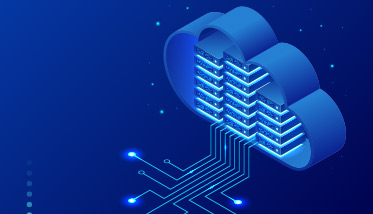October 30, 2023 - by Synoptek
As businesses evolve, they acquire and accrue a melee of tools, software, and technologies. But despite being surrounded by an abundance of new systems, organizations struggle to drive infrastructure optimization. An outdated or legacy foundation can severely impact business efficiencies while also causing cost overruns and poor growth prospects.

Given the current pace of digital transformation, CIOs must strengthen their technology infrastructure and make it resilient and adaptable to modern trends. They must look at ways to boost infrastructure performance and drive value through technology investments.
Read further to learn how cloud technology can promote the effective use and maintenance of technology assets and enhance infrastructure performance for maximum ROI.
What Is Infrastructure Performance?
Infrastructure performance refers to how well an organization’s technology systems and resources, such as servers, networks, databases, and other components can deliver the required computing capabilities. It includes factors such as system responsiveness, speed, reliability, scalability, and overall functionality. Simply put, infrastructure performance is about how well an organization’s technology works to meet its computing needs.
The Challenges of Infrastructure Performance
The business environment is constantly evolving with new applications, tools, and technologies being regularly introduced. As organizations embrace these innovations, they often experience excessive downtime because of unstable technology infrastructure. So, why is the technology foundation of most businesses so unstable? Here are the top reasons:
- Ad hoc technology decisions: Critical technology decisions that have been made by several decision-makers over time are usually ad-hoc in nature. Each department or business unit ends up implementing a bunch of siloed systems to meet their unique demands.
- Improper due diligence: Many businesses fail at carrying out proper due diligence to find a configurable off-the-shelf software product. They build one in-house, but it often lacks the agility they need to stay competitive.
- M&A complexity: Software systems that get inherited from mergers and acquisitions are either duplicated or stretched to encompass various avatars over time. This makes the underlying technology infrastructure extremely complex and confusing.
- Legacy systems: Legacy systems that have been heavily customized pose a complexity barrier to a replacement. Since they are built on outdated, proprietary technologies, they carry high opportunity and maintenance costs.
Why Technology Rationalization is the Need of the Hour
Despite the massive degree of technology disruption, today’s organizations struggle with converting resources into actionable plans. This is because their technology infrastructure is holding them back – restricting them from driving efficiencies, cost savings, and organic growth. Such an unstable foundation is also looked down upon by the modern customer, who expects agility and innovation in products and services.
Technology rationalization is a great way to identify and assess the real value of technology assets (as opposed to their perceived value). It allows organizations to:
- Capitalize on their technology investments and minimize infrastructure complexity.
- Make the right technology decisions while streamlining the process of technology management.
- Cost-effectively run the business and scale to meet increased demand without roadblocks.
- Efficiently manage the technology portfolio in a manner that is predictive and value-based.
- Boost operational capability and flexibility and keep pace with evolving market trends and customer demands.
How Does the Cloud Boost Infrastructure Performance?
The global cloud computing market is expected to reach $1.5 trillion by 2030. The technology enables organizations to keep their business and technology strategies aligned. The cloud also helps them with application modernization and getting rid of legacy systems that restrict them from efficiently and cost-effectively meeting their goals.
Technology rationalization leveraging the benefits of cloud platforms like Azure or AWS can help organizations meet their specific business needs while also enjoying higher levels of agility and resiliency. Using the cloud, businesses can:
- Easily connect applications and data across different technologies and environments.
- Accelerate time to insights while enjoying a better understanding of the business, customers, market, and competition.
- Stay aligned with the technological landscape and carry out support and maintenance activities with ease.
- Leverage modern, cutting-edge features that enable a competitive edge and expand their tech ecosystem to keep up with the times.
- Minimize downtime and gain valuable time lost due to an unstable infrastructure.
- Keep their technology infrastructure reliable with ongoing administration, 24/7 monitoring, and defined service level guarantees.
- Effectively manage changes in their technology environment and ensure uninterrupted flow for their business operations.
- Boost agility and stability in their enterprise environment and minimize service disruptions.
Drive Agility and Innovation with the Cloud
Technology investment decisions are never easy to make. Yet, as new tools get introduced into the ecosystem, they demand a foundation that is robust, resilient, and secure. Crafting a cloud-enabled technology rationalization strategy can enable businesses to harness real value from existing technology systems while also capitalizing on new platforms.
The cloud can allow for effective and economic management of technology resources, paving the way for improved operational efficiencies. It can enable organizations to fuel growth like never before. It can also open doors to new standards of profitability.
Irrespective of where you are in your rationalization journey, embrace the power of the cloud to boost infrastructure performance and drive business agility and innovation.



